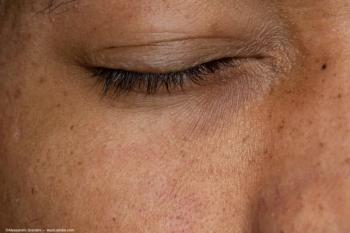
Study: Retina cell breakthrough could help treat blindness
A team of researchers at Anglia Ruskin University are harnessing nanotechnology to help tackle a common cause of sight loss.
Scientists have found a way to use nanotechnology to create a 3D ‘scaffold’ to grow cells from the
A team of researchers, led by Barbara Pierscionek, PhD, from Anglia Ruskin University (ARU), have been seeking a method to produce retinal pigment epithelial (RPE) cells that stay healthy and viable for up to 150 days. According to an ARU news release, the RPE cells sit just outside the neural part of the retina and, when damaged, can cause vision to deteriorate.1
According to ARU’s news release, it marks the first time the technology, known as “electrospinning,” has been used to create a scaffold on which the RPE cells could grow, and could revolutionize treatment for one of age-related macular degeneration, one of the world’s most common vision complaints.
The researchers noted in the news release the scaffold is treated with a steroid called fluocinolone acetonide, which protects against inflammation, the resilience of the cells appears to increase, promoting growth of eye cells. ARU noted the findings are important in the future development of ocular tissue for transplantation into the patient’s eye.
AMD can be caused by changes in the Bruch’s membrane, which supports the RPE cells, and breakdown of the choriocapillaris, the rich vascular bed that is adjacent to the other side of the Bruch’s membrane.
The researchers pointed out in Western populations, the most common way sight deteriorates is due to an accumulation of lipid deposits called drusen, and the subsequent degeneration of parts of the RPE, the choriocapillaris and outer retina. In the developing world, AMD tends to be caused by abnormal blood vessel growth in the choroid and their subsequent movement into the RPE cells, leading to hemorrhaging, RPE or retinal detachment and scar formation.1
The replacement of the RPE cells is among several promising therapeutic options for effective treatment of sight conditions like AMD, and researchers have been working on efficient ways to transplant these cells into the eye, according to the ARU news release.
“This research has demonstrated, for the first time, that nanofiber scaffolds treated with the anti-inflammatory substance such as fluocinolone acetonide can enhance the growth, differentiation, and functionality of RPE cells,” Pierscionek said in a statement.“In the past, scientists would grow cells on a flat surface, which is not biologically relevant.
Pierscionek added that by using these new techniques, the cell line has been shown to thrive in the 3D environment provided by the scaffolds.
“This system shows great potential for development as a substitute Bruch’s membrane, providing a synthetic, non-toxic, biostable support for transplantation of the retinal pigment epithelial cells,” she concluded in the news release. “Pathological changes in this membrane have been identified as a cause of eye diseases such as AMD, making this an exciting breakthrough that could potentially help millions of people worldwide.”
Reference:
Biola F. Egbowon, Enzo Fornari, Joseph M. Pally, Alan J. Hargreaves, Bob Stevens, T. Martin McGinnity, Barbara K. Pierscionek. Retinal pigment epithelial cells can be cultured on fluocinolone acetonide treated nanofibrous scaffold. Materials & Design, Volume 232, 2023, 112152, ISSN 0264-1275, DOI: https://doi.org/10.1016/j.matdes.2023.112152
Li JQ, Welchowski T, Schmid M, et al. Prevalence and incidence of age-related macular degeneration in Europe: a systematic review and meta-analysis. British Journal of Ophthalmology 2020;104:1077-1084.
Newsletter
Don’t miss out—get Ophthalmology Times updates on the latest clinical advancements and expert interviews, straight to your inbox.


















































.png)


